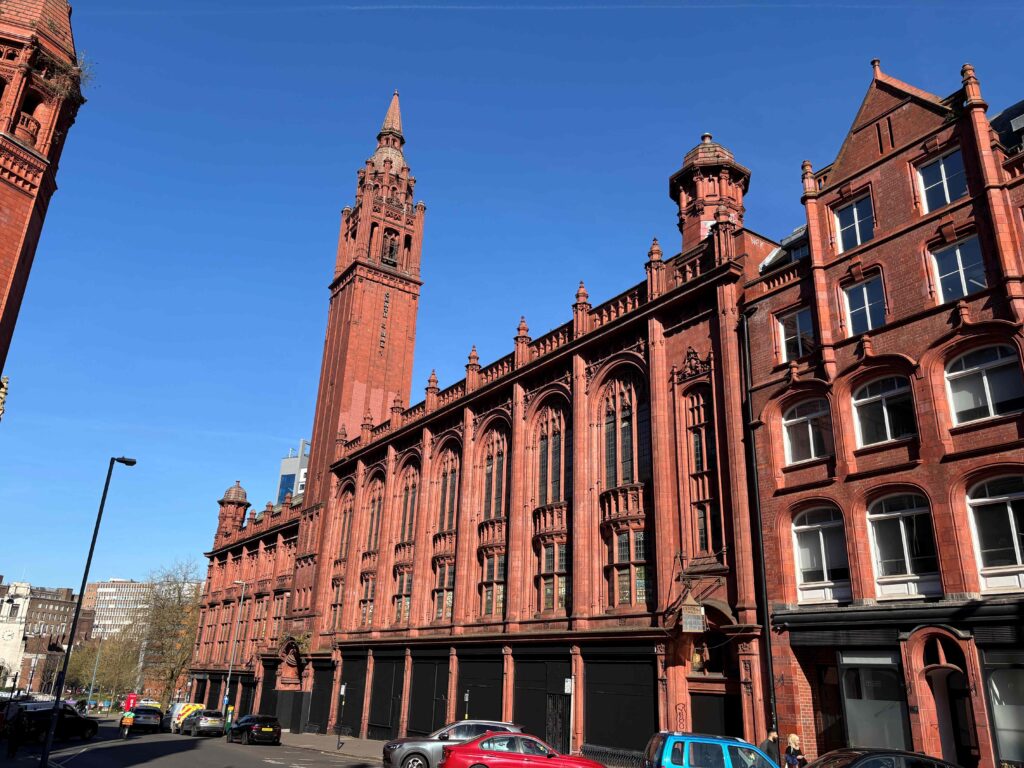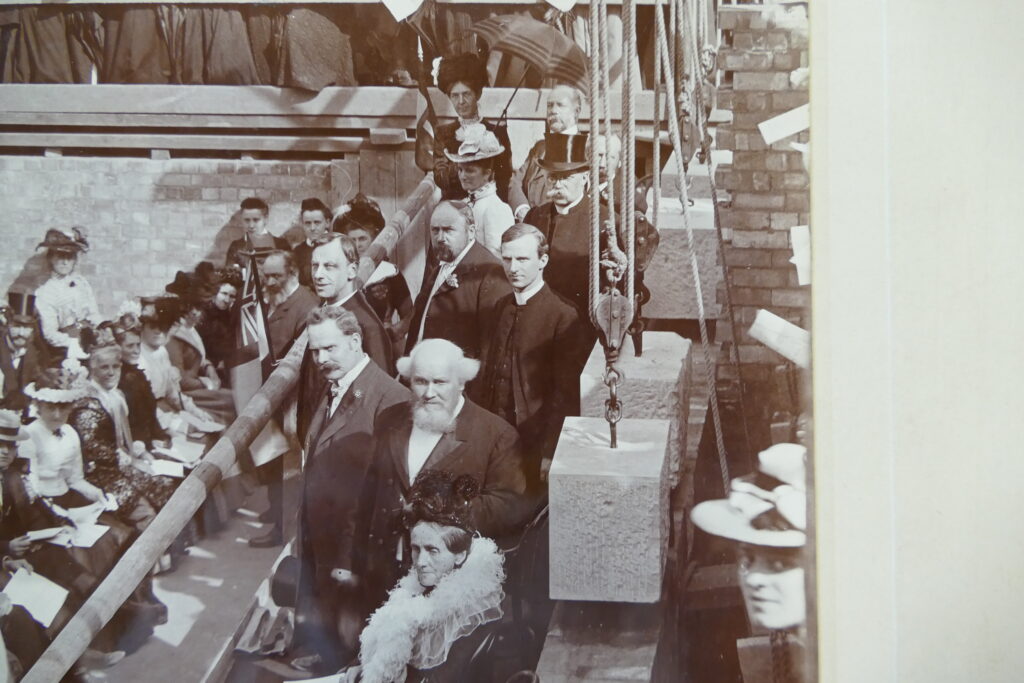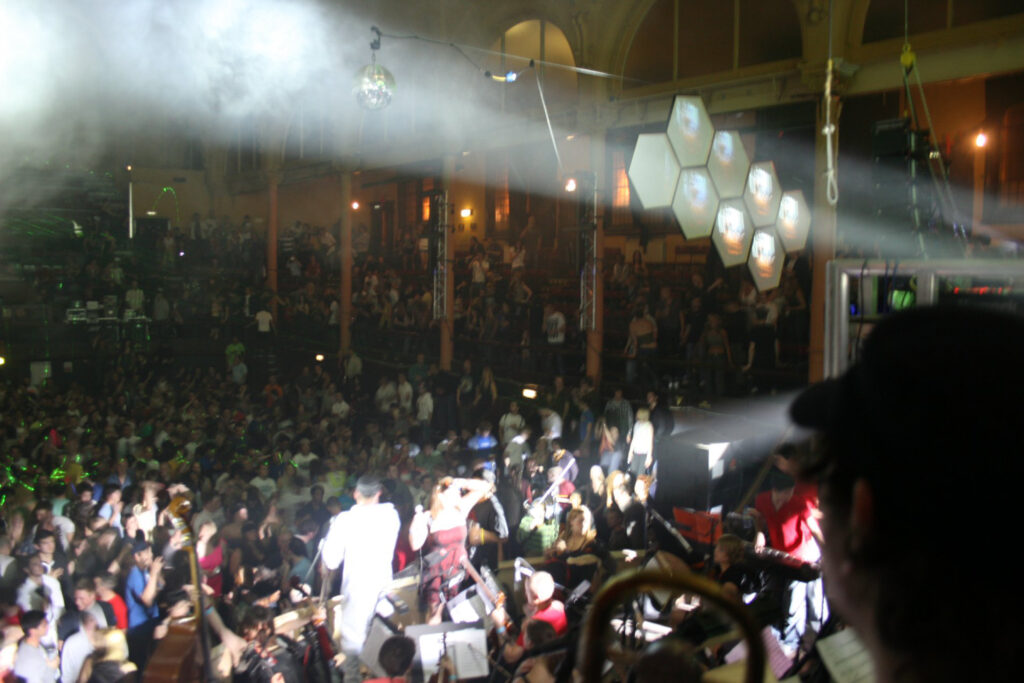
Former Methodist Central Hall, on Corporation Street in Birmingham. Photograph: Tim Bridges.
Grade II*, Ewen & J. Alfred Harper, 1900 – 1903
The Victorian Society has placed this landmark Grade II*-listed Birmingham building on its Top Ten Endangered Buildings List 2025.
Griff Rhys Jones OBE, Victorian Society President, said: ‘Echoing its name, a central fixture of a great city with a recent history of success that must be freshly minted in a lot of people’s minds, the old “Que” needs a new life. It would be inconceivable to lose this treasured house of good repute. It needs friends and it needs some noise. Let interested parties know that it needs some new ideas and dynamic thinking.’
Victorian Britain was gripped by a desire to steer the urban working class away from alcohol. One of its boldest responses was the construction of Methodist Central Halls – imposing venues where concerts, films, comedy, hymns, and prayers provided an alternative to the pub. Around 100 were built between 1886 and 1945 in cities across the UK. On Saturday nights, thousands flocked to these halls; at the evening’s close, many were asked to sign a temperance pledge.

Topping out ceremony at Methodist Central Hall in 1903. Photo credit: Birmingham Music Archive.
Birmingham’s Methodist Central Hall epitomises this social mission. Built to replace a smaller 1,100-seat predecessor on Corporation Street by Osborn & Reading, the new building opened in 1903 with a 2,000-seat main hall and 30 additional rooms, including three school halls. It was a purpose-built community powerhouse designed for both worship and outreach.

Central Hall gathering. Date unknown. Photograph: Birmingham Music Archive
Its grand architecture reflects its significance. The red brick and terracotta construction echoed the nearby Victoria Law Courts by Aston Webb & Ingress Bell. The decorative terracotta, crafted by Gibbs & Canning of Staffordshire, also graces major national landmarks like Manchester Town Hall, the Royal Albert Hall, and the Natural History Museum. Its spandrels depict allegories of Methodist teaching, while panels flanking the porch illustrate scenes from John Wesley’s life. Topped by a striking slender tower, the Central Hall remains a Birmingham landmark.

Methodist Central Hall Birmingham. Photograph: Tim Bridges.
By the late 20th century, however, religious attendance was in decline, and the building took on a new life. Purchased in 1989 by Rod Stewart’s former manager Billy Gaff, it became The Que Club, a music venue that still shared space with Methodist worship. Hosting legends like David Bowie, Daft Punk, Blur, and Massive Attack, it became a haven for alternative culture. It was central to Britain’s rave scene, hosting nights such as Atomic Jam and House of God, reverberating with techno, jungle, and Britpop. BBC Radio 1 held live Essential Mix nights here, and photographer Terence Donovan’s 1996 images of the Que Club later went on display.

Flashback © Jon Bryant courtesy of Birmingham Music Archive.
The venue closed in 2017, and the building – once vibrant with life – slipped into decline. A 2022 exhibition at Birmingham Museum and Art Gallery, curated by Birmingham Music Archive, celebrated the Que Club’s legacy (including the images viewed here), but by then the Central Hall had already appeared on Historic England’s Heritage at Risk Register.

Drop Beats Not Bombs © David Whittall – Birmingham Music Archive.
That same year, developers Press Up Hospitality and Oakmount received planning permission to convert it into ‘The Dean’, a 155-room hotel. However, the project stalled and receivers were appointed. Now, Methodist Central Hall is back on the market via Savills. One of Birmingham’s most impressive buildings is deteriorating, its rich history steadily overtaken by buddleia, its future uncertain.
The full Top Ten Endangered Buildings list 2025 of Victorian and Edwardian buildings, and the archive of our previous Top Ten lists can be viewed here.

Entrance to the former Methodist Central Hall in Birmingham with Buddleia taking over. Photograph: Tim Bridges.